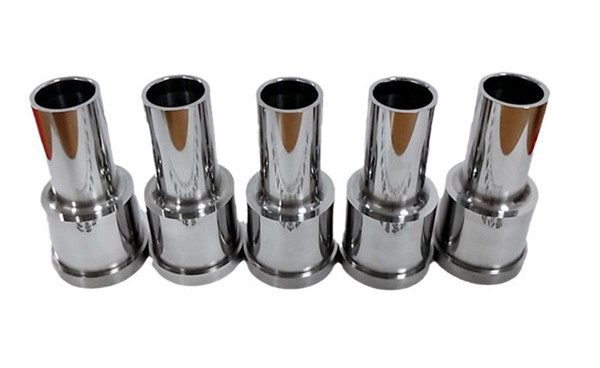Does tungsten carbide contain nickel
Pure tungsten carbide contains no nickel. Pure tungsten carbide is a compound (WC) composed of tungsten (W) atoms and carbon (C) atoms, with a simple hexagonal crystal structure. The compound itself contains no nickel or other metal elements.
Cemented carbide (commonly known as “tungsten carbide” products):
It usually contains nickel (or cobalt). Most of the “tungsten carbide” tools, drills, wear-resistant parts, etc., we talk about in daily life actually refer to cemented carbide. Cemented carbide is a composite material formed by sintering hard tungsten carbide particles as the main body with a metal binder phase at high temperatures.
The main role of nickel is to act as a binder phase. Nickel (Ni) is one of the most commonly used binder metals in cemented carbide (the other most common one is cobalt, Co). Its role is crucial:
The role of nickel in cemented carbide (tungsten carbide-based composite materials):
Bonding tungsten carbide particles: This is the most basic and important function of nickel. During the sintering process (usually at high temperatures above 1455°C), nickel melts to form a liquid phase. The liquid nickel can wet the surface of tungsten carbide particles and fill the gaps between the particles. After cooling and solidification, nickel acts like “glue” to firmly bond the hard but brittle tungsten carbide particles together, forming a dense and strong overall structure. Without the binder phase, loose tungsten carbide powder cannot form a bulk material with practical strength.
Providing toughness and impact resistance: Pure tungsten carbide is very hard but also very brittle. The continuous or semi-continuous metal network formed by nickel (or other binder phases) provides the material with necessary toughness, ductility, and impact resistance. When the material is subjected to external forces (such as impact, vibration), the metal phase can absorb energy through plastic deformation, preventing rapid crack propagation and avoiding catastrophic brittle fracture of the material. This allows cemented carbide to be used under working conditions with impact and vibration (such as mining tools, stamping dies).

Affecting hardness and wear resistance: The content and properties of the binder phase directly affect the hardness and wear resistance of the alloy:
The lower the content of the binder phase, the more direct contact between tungsten carbide particles, the higher the overall hardness of the alloy, and the better the wear resistance (especially abrasive wear), but the toughness will decrease.
The higher the content of the binder phase, the better the toughness of the alloy, but the hardness will decrease.
Nickel vs. cobalt: Nickel-based binder phase alloys usually have slightly lower hardness and strength than cobalt-based alloys, but better toughness, corrosion resistance, and thermal fatigue resistance. Nickel also has good wettability to tungsten carbide, but its strength is usually slightly lower than that of cobalt.
Providing corrosion resistance: Cemented carbide with a nickel-based binder phase has significantly better corrosion resistance (acid resistance, alkali resistance, salt spray resistance, etc.) than cobalt-based alloys. This is because nickel itself is more corrosion-resistant than cobalt. This makes nickel-based cemented carbide widely used in wear-resistant components in corrosive environments such as chemical industry, marine, and food processing (such as tungsten carbide sealing rings, pump valve parts, nozzles).

High-temperature oxidation resistance: Nickel can form a more stable protective oxide film at high temperatures, so nickel-based cemented carbide generally has better high-temperature oxidation resistance than cobalt-based alloys.
Non-magnetic: Nickel-based cemented carbide is usually non-magnetic (or weakly magnetic), while cobalt-based alloys are ferromagnetic. This is an advantage in applications that require avoiding magnetism (such as some electronic equipment, medical equipment).
Summary:
Pure tungsten carbide (WC) itself contains no nickel.
The “tungsten carbide” products we usually refer to (such as tools, drills, wear-resistant parts) are actually cemented carbide, whose main components are tungsten carbide particles and a metal binder phase.
Nickel (Ni) is a very important binder phase metal in cemented carbide. The core roles of nickel in cemented carbide are:
Bonding hard tungsten carbide particles to form a dense whole.
Endowing the material with necessary toughness and impact resistance.
Providing better corrosion resistance compared with cobalt.
Providing better high-temperature oxidation resistance compared with cobalt.
Usually making the alloy non-magnetic.
The choice of nickel or cobalt as the binder phase depends on the specific requirements of the final cemented carbide application (strength, hardness, toughness, corrosion resistance, oxidation resistance, cost, etc.). Nickel-based binder phases are especially indispensable in occasions with high corrosion resistance requirements.
Our company is among China’s top ten cemented carbide manufacturers. Should you require cemented carbide products, please contact us.
